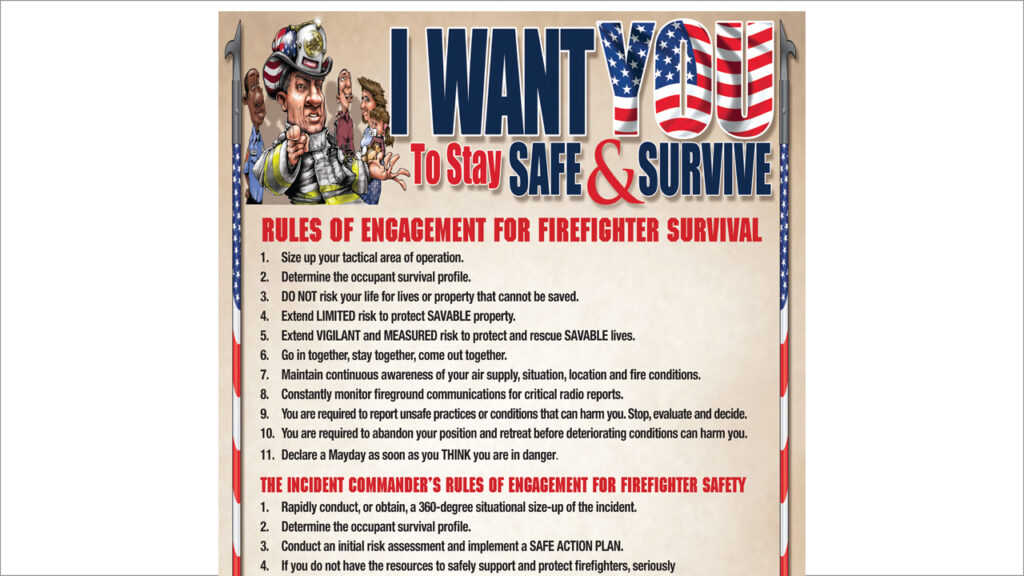By: Robert Avsec, Executive Fire Officer
The concept of the Rapid Intervention Crews (RIC) has gained much notoriety in recent years as a fireground strategy for making conditions safer for those firefighters engaged in interior structural firefighting operations. The first edition of NFPA 1407: Standard for Training Fire Service Rapid Intervention Crews was approved by the NFPA’s Standards Council in December 2009, and the standard is now in its third edition (2020 Edition).
And yes, the standard uses the terminology of Rapid Intervention Crews (RIC), not Rapid Intervention Team (RIT). It’s 2024, so get on board with the standard.
The publication of NFPA 1407 provided much needed guidelines for fire departments looking to develop RIC policies, procedures, and training. Pop Quiz: What prompted the concept of RIC and the need for a standard like NFPA 1407? (Answer below).
In the fourteen years since its initial publication, NFPA 1407 has been a big part of fire departments elevating the “status” of the RIC as a critical fireground task assignment on par with that of search, fire attack, ventilation, and laddering.
While this has been a positive step in the right direction regarding firefighter safety, the RIC is a “reactive” approach to firefighter safety. The RIC is in the “background” until something goes wrong (e.g., a firefighter becomes lost, entrapped or otherwise endangered). The presence of the RIC can also provide a false sense of security, especially when the RIC consists of only two firefighters.
It takes more than two, way more than two
In the wake of the death of Firefighter Brent Tarver in March 2001 during a supermarket fire in Phoenix, AZ, the Phoenix Fire Department conducted 200 RIC drills involving 1144 PFD firefighters. The drills took place in three vacant commercial buildings that PFD had obtained permission to use: a warehouse, a movie theatre, and a country-western bar. The drills were structured to simulated the conditions of the supermarket fire that took Tarver’s life with the goal of determining how many firefighters it truly takes to effect a firefighter rescue. (See article, Mayday and Rapid Intervention Realities: The Phoenix Perspective. The study methodology and results are below the account of the incident and operations the day of Firefighter Tarver’s death).
Their results indicated that it took an average of 12 firefighters to safety, effectively and efficiently rescue one endangered firefighter. Granted, these evaluations were conducted in larger commercial occupancies with “big footprints,” and it likely would take fewer than 12 firefighters in a 2000 square foot single-family dwelling (SFD). I feel confident, however, that a firefighter rescue in such a SFD would require more than two firefighters.
And even if it takes only another two firefighters, where are they going to come from? (Those firefighters already engaged in fire suppression tasks, e.g., fire attack and search and ventilation, must stay focused on those tasks lest the fire continues to grow in its severity and magnitude potentially putting more personnel in jeopardy).
Read Next: 5 firefighter safety issues we shouldn’t still be talking about
Proactive fireground behaviors
I submit that there are several proactive fireground behaviors that are critical to reducing unmanaged hazards on the fireground and thus improving firefighter safety. These behaviors include:

- Implementation of the Incident Command System (ICS) by the first arriving unit. All personnel on the scene–from the newest firefighter to the fire chief–must know and understand their position responsibilities for their assigned ICS position. Everyone should clearly understand what their job is and who their boss is on the fireground.
- The incident commander (IC) conducts an initial Risk Assessment [See IAFC’s 10 Rules of Engagement for Structural Firefighting] to determine the appropriate mode of operation–defensive, offensive, or marginal–and reassess every ten minutes while operations are ongoing.
- The IC develops, communicates, and implements an Incident Action Plan to all their subordinates. Division and Group Supervisors and Crew Leaders should clearly understand their assigned objective, the resources assigned to them, and their radio call sign.
- The IC establishes an Accountability System to accurately track the location of all assigned resources on the fireground. If Firefighter Jones gets in a “jam”, the IC should know who Jones was working for and where Jones should have been working. (Effective and efficient deployment of the RIC and other resources to assist Jones are dependent on quickly identifying the “last known location” for FF Jones).
- The IC is unyielding in their control of incident communications. They position themselves so that they have a work environment where they can hear all incoming radio traffic, and their subordinates can hear their outgoing radio transmissions.
- Division and Group Supervisors and Crew Leaders are unyielding in their enforcement of crew integrity (i.e., nobody works solo and the officer always knows where their people are and what they’re doing).
In these days of budget reductions and inadequate staffing, the best use of RIC is the non-deployment of RIC because our proactive fireground behaviors ensured that they were never needed. What’s your take?
Pop Quiz Answer: “Two in, two out” became a part of the firefighting lexicon circa 1998 with OSHA’s interpretation of (g)(4) of OSHA’s Respiratory Protection Standard, 29 CFR 1910.134, which had been recently revised and published in the Federal Register.
In addition, the standard addresses the use of respirators in Immediately Dangerous to Life or Health (IDLH) atmospheres, including interior structural firefighting. During interior structural firefighting (an IDLH atmosphere by definition), self-contained breathing apparatus is required, and two firefighters must be on standby to provide assistance or perform rescue when two firefighters are inside the burning building.
OSHA. 29 CFR Parts 1910 and 1926. Final rule; Request for comment on paperwork requirements.
 Fire & EMS Leader Pro The job of old firefighters is to teach young firefighters how to become old firefighters!
Fire & EMS Leader Pro The job of old firefighters is to teach young firefighters how to become old firefighters!